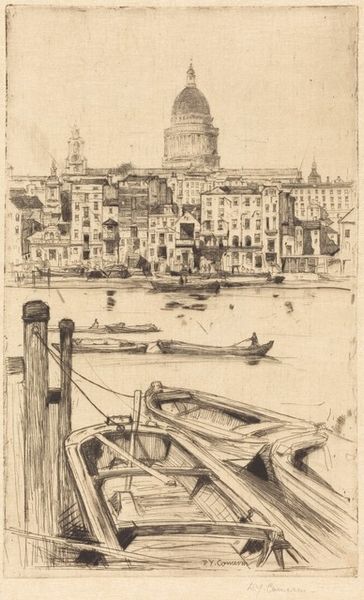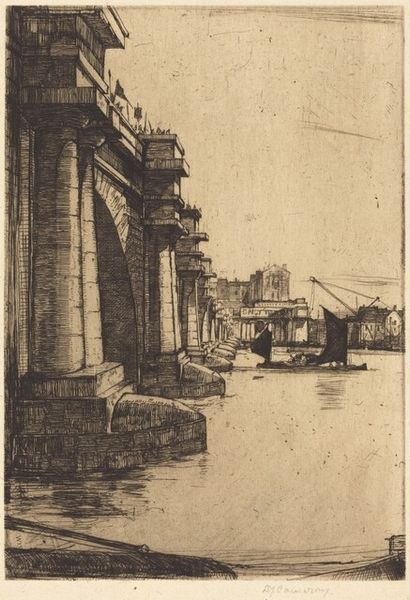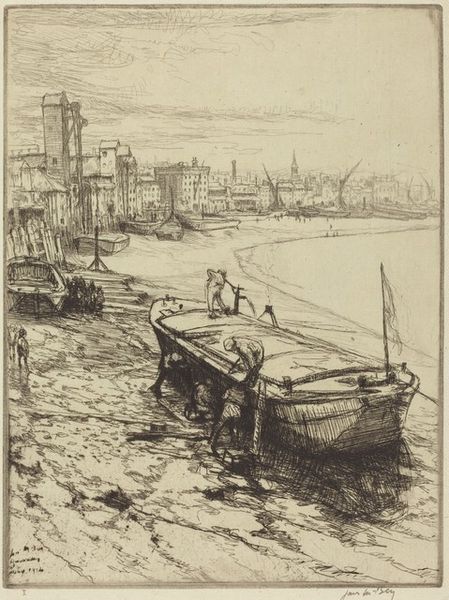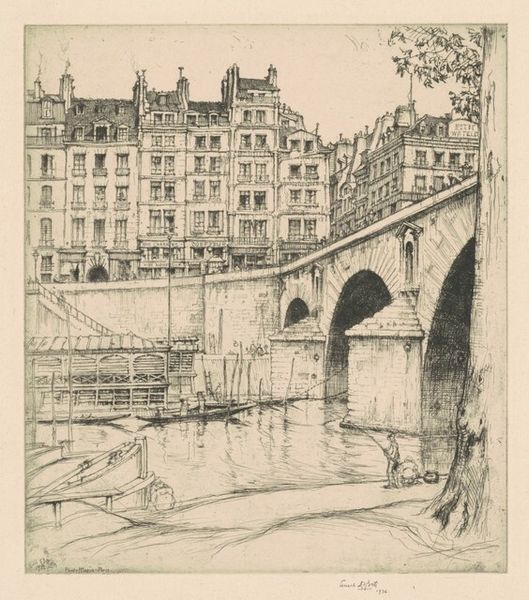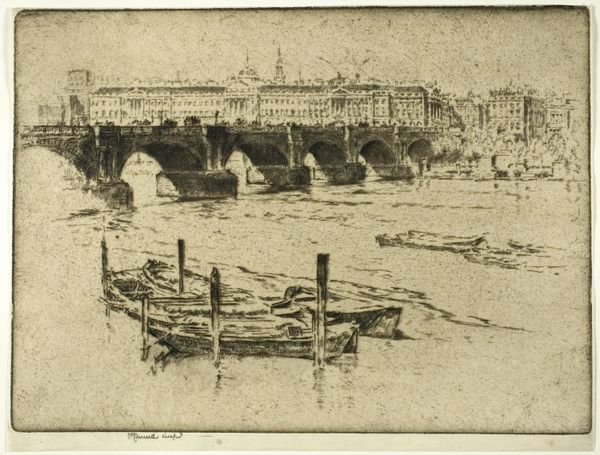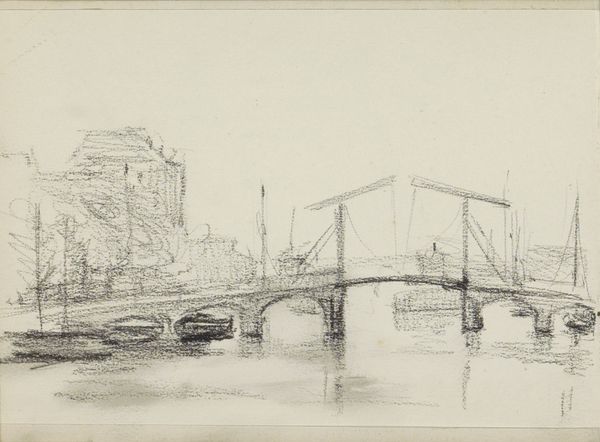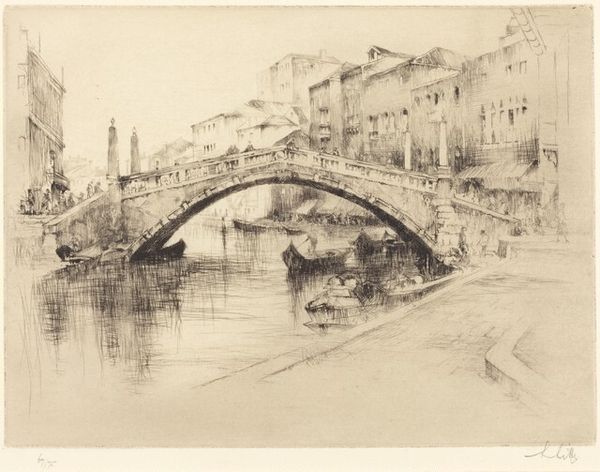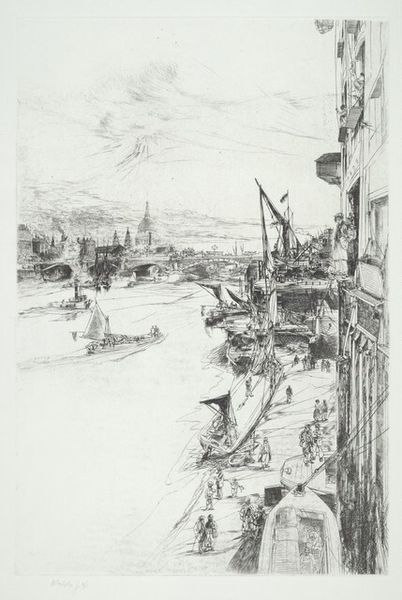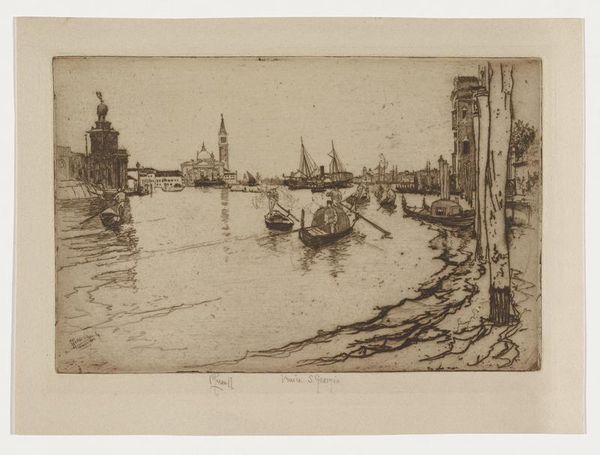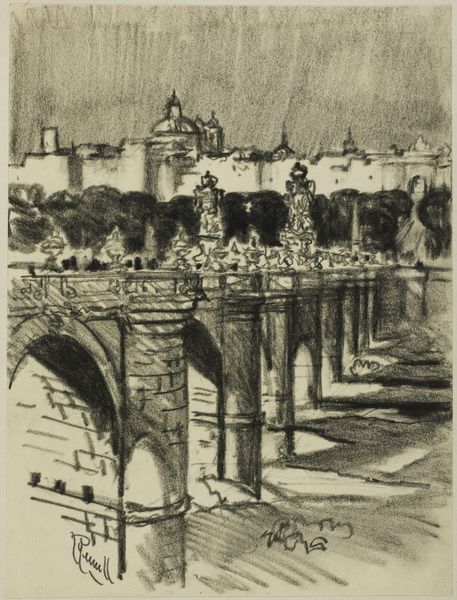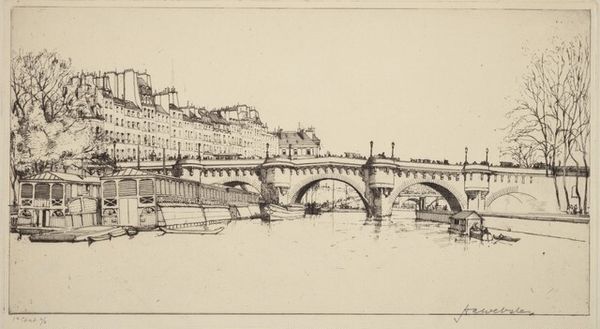
Copyright: National Gallery of Art: CC0 1.0
Curator: What strikes me immediately about this etching, James McBey's "The Lion Brewery" from 1914, is its incredible stillness. It feels so hushed and serene for a cityscape. Editor: The mood certainly emerges from its subtle formal qualities. The soft, sepia tones and the meticulous layering of lines definitely create that quiet, almost dreamlike state. There's a masterful use of light and shadow in those textures that soften hard architectural edges. Curator: Absolutely. And London in 1914 was on the cusp of so much change. I find myself reflecting on the sociopolitical context: a world transitioning into a cataclysmic war, a moment captured here with remarkable tranquility, as if oblivious to what was to come. It is rather telling when you consider its public role as an available print during wartime, which allows one to appreciate that moment from a personal space as much as within the socio-economic situation. Editor: Yes, it serves as a sort of liminal snapshot, doesn't it? Look at the lines pulling our eye across the Thames; consider the strategic use of verticals and horizontals: bridge, masts, river. Curator: Beyond the lines and texture, for Londoners especially, there's also this tension: on the one hand the familiarity of St. Paul's Cathedral and, on the other hand, the more industrial structure under scaffolding on the shore—suggesting that the modern progress is built at the expense of something older. Editor: Yes! It almost speaks to Walter Benjamin’s observation about history as catastrophe: this interplay is clearly visible across the image in terms of contrasting texture alone! The dome is rendered using curved and parallel marks to generate volume while all industrial constructions use irregular patches, suggesting temporality. Curator: In that respect, perhaps this wasn't just a quiet scene but McBey showing an understanding of a complex environment transforming—his impression serving as his testimony to those times. Editor: Perhaps. Whether it represents one over the other, both, at the end of the day it remains in its form: the contrast and interaction of light, dark, verticals, and diagonals—that’s really the brilliance we see now over a century later!
Comments
No comments
Be the first to comment and join the conversation on the ultimate creative platform.
